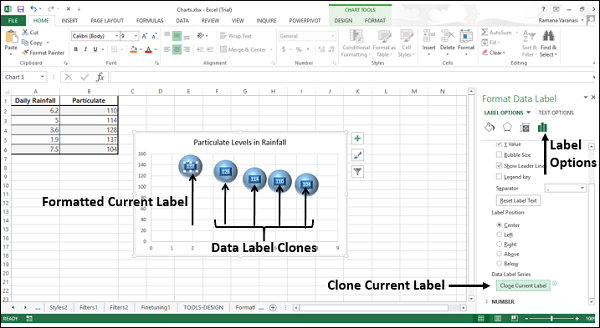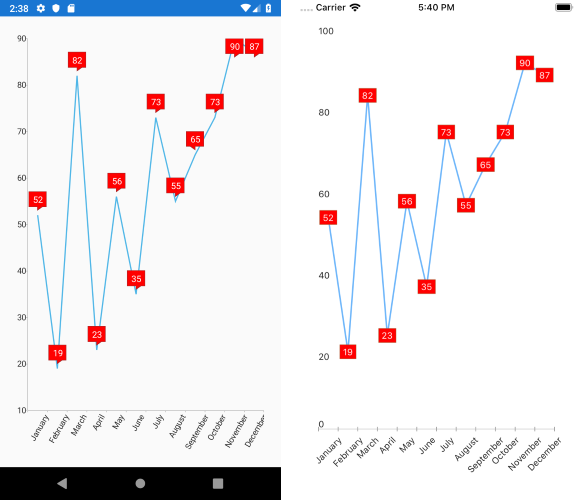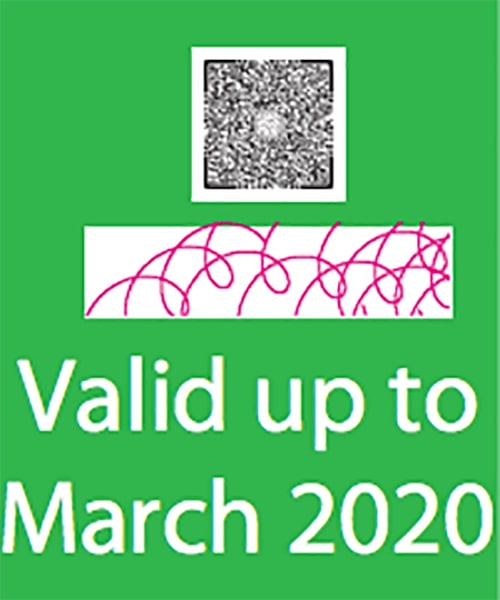43 data labels in r
5 Key Data Visualization Principles Explained - Examples in R If your dataset has a categorical feature (e.g., day of the week, gender, age group), you can use it to color the bars or different chart segments. Simply set the fill parameter to the name of the dataset variable in the ggplot () function call: Image 6 - Chart with a multiple color bars R Data Import/Export The most common task is to write a matrix or data frame to file as a rectangular grid of numbers, possibly with row and column labels. This can be done by the functions write.table and write . Function write just writes out a matrix or vector in a specified number of columns (and transposes a matrix).
graph_from_data_frame : Creating igraph graphs from data frames or vice ... Description This function creates an igraph graph from one or two data frames containing the (symbolic) edge list and edge/vertex attributes. Usage as_data_frame (x, what = c ("edges", "vertices", "both")) graph_from_data_frame (d, directed = TRUE, vertices = NULL) from_data_frame (...) Arguments Details

Data labels in r
Working Directories and Workspaces in the RStudio IDE This default behavior can be customized in the following ways using the RStudio Options dialog: Change the default working directory Enable/disable the loading of .RData from the default working directory at startup Specify whether .RData is always saved, never saved, or prompted for save at exit. Changing the Working Directory Create boxplot for continuous variables using ggplot2 in R Example 1: R # loading library library(ggplot2) # creating random dataset data <- data.frame(y=abs(rnorm(16)), x=rep(c(0,100,200,300,400, 500,600,700), each=2)) # creating the box plot ggplot(data, aes(x, y, group=x)) + # plotting the box plot with green color geom_boxplot(fill="green") + # adding x-axis label xlab("x-axis") + # adding y-axis label r - Add additional labels from a DataFrame to a facet_grid with ... p + geom_text (data = ann_text,label = "Text") Multiple Labels: p + geom_text (data = ann_text,label = "Text") + geom_text (data = dfl, mpg = 30,wt = 5, aes (label = r)) The method I'm using is trying to recreate other examples I've found here on SO and elsewhere but I seem to be missing something. r ggplot2 label data-visualization facet Share
Data labels in r. CRAN - Package labelled labelled: Manipulating Labelled Data. Work with labelled data imported from 'SPSS' or 'Stata' with 'haven' or 'foreign'. This package provides useful functions to deal with "haven_labelled" and "haven_labelled_spss" classes introduced by 'haven' package. Version: 2.9.1. How to convert string categorical variables into numerical variables ... For training and predicting using Machine Learning Algorithms, we have to change categorical data into numerical data and this can be done easily by Label Encoding. This data science python source code does the following: 1. Convert categorical features into numerical. 2. Implementation of Label Encoding function. Labelling - How to label the coefficients - Portal Grid lines. By default, if only one model (or only one model per subgraph) is plotted, coefplot draws a grid line for each coefficient. If multiple models are plotted, coefplot draws grid lines between coefficients. Use the grid () option to change these defaults or turn the grid lines off. PCAtools: everything Principal Component Analysis 4.5 Access the internal data; 5 Advanced features. 5.1 Determine optimum number of PCs to retain; 5.2 Modify bi-plots. 5.2.1 Colour by a metadata factor, use a custom label, add lines through origin, and add legend; 5.2.2 Supply custom colours and encircle variables by group; 5.2.3 Stat ellipses
labs : Modify axis, legend, and plot labels # The plot tag appears at the top-left, and is typically used # for labelling a subplot with a letter. p + labs (title = "title", tag = "A") # If you want to remove a label, set it to NULL. p + labs (title = "title") + labs (title = NULL) ggplot2 documentation built on May 3, 2022, 9:07 a.m. EOSDIS Worldview The NASA Worldview app provides a satellite's perspective of the planet as it looks today and as it has in the past through daily satellite images. Worldview is part of NASA's Earth Observing System Data and Information System. EOSDIS makes the agency's large repository of data accessible and freely available to the public. Hierarchical Clustering with Python and Scikit-Learn Steps to Perform Hierarchical Clustering. Following are the steps involved in agglomerative clustering: At the start, treat each data point as one cluster. Therefore, the number of clusters at the start will be K, while K is an integer representing the number of data points. Form a cluster by joining the two closest data points resulting in K-1 ... Value Labels - Quick-R
R Functions List (+ Examples) | All Basic Commands of R Programming List of R Commands & Functions abline- Add straight lines to plot. abs- Compute the absolute value of a numeric data object. addmargins- Put margins on tables or arrays. addNA- Turn NA values into a factor level. aggregate- Compute summary statistics of subgroups of a data set. alist- Create a list object containing function arguments. R-bloggers Take the first R steps and enhance your data science toolkit with us on June 8th! ... Introduction If you've ever visited any food establishment in England & Wales, you've probably noticed the green labels somewhere on the outside with a Food Hygiene Rating from 0-5 on it. If y... EnhancedVolcano: publication-ready volcano plots with enhanced ... Load the package into R session; 3 Quick start. 3.1 Plot the most basic volcano plot; 4 Advanced features. 4.1 Modify cut-offs for log2FC and P value; specify title; adjust point and label size; 4.2 Adjust colour and alpha for point shading; 4.3 Adjust shape of plotted points; 4.4 Adjust cut-off lines and add extra threshold lines Importing Data with the RStudio IDE - RStudio Support Importing data into R is a necessary step that, at times, can become time intensive. To ease this task, the RStudio IDE includes new features to import data from: csv, xls, xlsx, sav, dta, por, sas and stata files. Importing data The data import features can be accessed from the environment pane or from the tools menu.
r - Create column with labels from labelled data - Stack Overflow I have a data set with labelled data and would like to create a new column containing only the label as character. Consider the following example:
Data Modelling: Conceptual, Logical, Physical Data Model Types Types of Data Models. Types of Data Models: There are mainly three different types of data models: conceptual data models, logical data models, and physical data models, and each one has a specific purpose.The data models are used to represent the data and how it is stored in the database and to set the relationship between data items.
Databricks Utilities - Azure Databricks | Microsoft Docs dbutils utilities are available in Python, R, and Scala notebooks.. How to: List utilities, list commands, display command help. Utilities: data, fs, library, notebook, secrets, widgets, Utilities API library. List available utilities. To list available utilities along with a short description for each utility, run dbutils.help() for Python or Scala.. This example lists available commands for ...
Exploratory Data Analysis on Iris Dataset - GeeksforGeeks Iris Dataset is considered as the Hello World for data science. It contains five columns namely - Petal Length, Petal Width, Sepal Length, Sepal Width, and Species Type. Iris is a flowering plant, the researchers have measured various features of the different iris flowers and recorded them digitally. Note: This dataset can be downloaded from ...
Visualizations - Azure Databricks | Microsoft Docs Data Profile displays summary statistics of the Apache Spark or pandas DataFrame in tabular and graphic format. Numeric and categorical features are shown in separate tables. At the top of the tab, you can sort or search for features. At the top of the chart column, you can choose to display a histogram ( Standard) or quantiles.
R Graphics Cookbook, 2nd edition This cookbook contains more than 150 recipes to help scientists, engineers, programmers, and data analysts generate high-quality graphs quickly—without having to comb through all the details of R's graphing systems. Each recipe tackles a specific problem with a solution you can apply to your own project and includes a discussion of how and why the recipe works.
SPSS Tutorials: Recoding String Variables (Automatic Recode) Click Transform > Automatic Recode. Double-click variable State in the left column to move it to the Variable -> New Name box. Enter a name for the new, recoded variable in the New Name field, then click Add New Name. Check the box for Treat blank string values as user-missing. Click OK to finish.
seurat/visualization.R at master · satijalab/seurat · GitHub Allows for nice visualization of sources of heterogeneity in the dataset. #' @param cells A list of cells to plot. If numeric, just plots the top cells. #' @param balanced Plot an equal number of genes with both + and - scores. #' ggplot object. If \code {FALSE}, return a list of ggplot objects.
How to Add Colors to Axis Tick Label in ggplot2 - Data Viz with Python ... To add colors to axis labels we will use the R package " ggtext: Improved text rendering support for ggplot2 " developed by Claus Wilke. Let us get started by loading the packages needed. We will use Palmer Penguin data set to make a barplot of mean values of body mass per species.
Circular Visualization in R - GitHub Pages About. This is the documentation of the circlize package. Examples in the book are generated under version 0.4.15. If you use circlize in your publications, I am appreciated if you can cite: Gu, Z. (2014) circlize implements and enhances circular visualization in R. Bioinformatics. DOI: 10.1093/bioinformatics/btu393. Session info: sessionInfo()
Creating a Codebook - SPSS Tutorials - Kent State University Using the Codebooks Dialog Window. Open the SPSS datafile. Click Analyze > Reports > Codebook. In the Variables tab: Add the variables you want in the codebook to the Codebook Variables box. To include all variables, click inside the Variables box, press Ctrl + A, then click the arrow button. In the Output tab: (Optional) Choose what variable ...
Plotting regression coefficients and other estimates in Stata - Portal Plotting multiple models Models as separate series. The syntax to include multiple models as separate series in the same graph is coefplot (name [, plotopts]) (name [, plotopts]) ...[, globalopts] where plotopts are options that apply to a single series. These options specify the information to be collected, affect the rendition of the series, and provide a label for the series in the legend.
r - Add additional labels from a DataFrame to a facet_grid with ... p + geom_text (data = ann_text,label = "Text") Multiple Labels: p + geom_text (data = ann_text,label = "Text") + geom_text (data = dfl, mpg = 30,wt = 5, aes (label = r)) The method I'm using is trying to recreate other examples I've found here on SO and elsewhere but I seem to be missing something. r ggplot2 label data-visualization facet Share
Create boxplot for continuous variables using ggplot2 in R Example 1: R # loading library library(ggplot2) # creating random dataset data <- data.frame(y=abs(rnorm(16)), x=rep(c(0,100,200,300,400, 500,600,700), each=2)) # creating the box plot ggplot(data, aes(x, y, group=x)) + # plotting the box plot with green color geom_boxplot(fill="green") + # adding x-axis label xlab("x-axis") + # adding y-axis label
Working Directories and Workspaces in the RStudio IDE This default behavior can be customized in the following ways using the RStudio Options dialog: Change the default working directory Enable/disable the loading of .RData from the default working directory at startup Specify whether .RData is always saved, never saved, or prompted for save at exit. Changing the Working Directory












Post a Comment for "43 data labels in r"